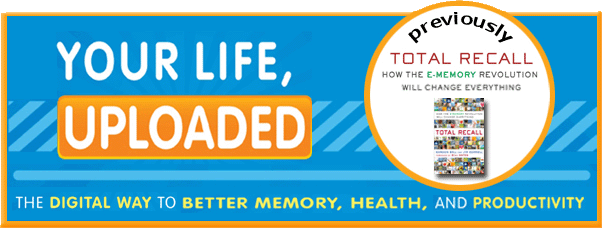Lifelogging Taxonomy: Extreme lifelogging by 2020
 Thursday, November 1, 2012 at 6:34PM
Thursday, November 1, 2012 at 6:34PM I'm fond of building taxonomies to aid understanding where a field or things are and where progress is likely to lead. The need to define "extreme lifelogging" came up in the summer of 2009 when speaking to the New Scientist. I claim that everyone with a computer isdoing lifelogging to some degree, creating memories--provided they aren't deleting. I then claimed that in 10 years, continuous life recording of everything being seen would be common in 2020 --this is extreme lifelogging
Since we started using or wearing SenseCams in 2003, when someone sees me for the first time, they invariably ask: "Where's the camera that's recording everything?" Thus the discussion in 2009 prompted the definition of the recording of everything we ever see as Extreme Lifelogging (almost). When we also capture sound i.e. conversations, it is even more extreme.
In defining extreme lifelogging it is critical to show the various degrees and facets of capturing everything aka lifelogging.
So hear's verson 0.9 of a taxonomy... in some sense ordered by degree:
•Implicit, light lifelogging–store and retain everything your computer has seen for record keeping, recall
•Professional lifelogging --maintaince of corporate and personal communication and records, etc.
•Lifelong learned logging retention of books, magazines and journals read, courses taken
•Personal and Family lifelogging
•Social lifelogging communication, ideas, etc. are spread everywhere e.g. FB, LinkedIn, Yammer
•Health-Wellness lifelogging. Quantitative Self Movement is aimed at constant tracking of health bits
•Transcribing all notes from conversations & thoughts lifelogging - Thad Starner c1983-
Extreme lifelogging everything you see and hear.
–Lifelog Tracks aka lifetrack aka lifetrek
•After-life Lifelogging Only your avatar knows. TBD
•Institutional lifelogging e.g. LoC, British Library
•Property lifelogging… a catalog of life's stuff
 Extreme lifelogging,
Extreme lifelogging,  taxonomy in
taxonomy in  Memory,
Memory,  MyLifeBits,
MyLifeBits,  The Future
The Future 
